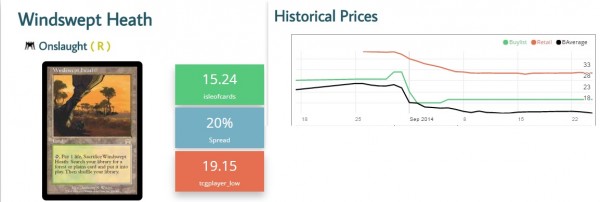Are you a Quiet Speculation member?
If not, now is a perfect time to join up! Our powerful tools, breaking-news analysis, and exclusive Discord channel will make sure you stay up to date and ahead of the curve.
As I mentioned in last week's article on inventory management, today I'm going to talk about inventory control.
The two concepts are related, but distinct. While inventory management is about organizing to optimize internal efficiency, the basic premise behind inventory control is to make sure your inventory reflects what your customers need.
Just in Time Principle
In the business world there is a concept called "just in time" manufacturing, in which parts arrive at an assembly line with minimal time in storage. In manufacturing, storing things costs money so minimizing storage time saves money. If you buy all the washers you need for two years, you may save money on a bulk rate, but you'll also tie up capital in something you can't use for several years.
That may sound a bit abstract, so let's look at an example.
Tim owns a hobby shop. He hosts Standard FNMs, weekly Legacy tournaments on Saturdays, and an EDH night on Wednesdays. He tends to get 15-20 players for his FNMs, 10 players for his Legacy tournaments, and 30 players for EDH night. His singles sales mirror attendance (i.e. he makes the most singles money on EDH night). He hasn't built an online presence yet, so his marketplace is limited to the local playerbase.
One Wednesday three different EDH players request Doubling Season, which unfortunately he's out of. The next day he drives to the other store in town (which has no EDH presence), and lo and behold it has 20 Doubling Seasons in stock. The owner normally sells them at $26.50, but he offers a bulk discount--the whole lot for $20 each, or 10 for $24 each. Tim knows he can sell them for $27.50.
- If he buys all 20 he'll maximize profits, but he doesn't know how long they will take to sell. He would have to sink $400 into that investment. Once sold, his profit would be $150 (assuming the $27.50 price remains the same).
- If he buys 10, his investment is $240. It's easier for him to sell 10 than 20, but even then he doesn't know how long it will take. Once sold his profit is $35.
- If he buys three, his investment is $79.50, but he'll sell all three within the week. His profit in this case is only $3.
If he operated on the "just in time" principle he would only purchase the three he knows will immediately sell. He won't sink a lot of money into "storing" the remainder of the stock in the hopes of unloading it slowly.
If Tim has a lot of cash available, then he might seriously consider the full allotment option. But if he's like most LGS owners I've met, he probably doesn't operate with a huge profit line and instead tries to make easy money when he can.
Sunk Costs
A "sunk cost" is an unrecoverable cost that has already been incurred. If Tim were able to sell his Doubling Seasons they would not be a sunk cost, but in theory they are until they do resell.
Even worse, if Doubling Season were reprinted and the price dropped to $10, then he would truly have a sunk cost because his $400 inventory would now be worth $200, equal to the sunk cost of acquiring it. In Magic finance we're familiar with the inherent danger of investing a large amount of money on any single card--its price may be stable for a long time only to get cut in half with a single announcement.
Notice the sudden drops in the charts above. Care to guess what was announced on August 30th, 2014?
Stores and players who had stockpiled fetchlands lost a lot of money on these. Along with the shocklands, these are the largest-profile reprints we've seen, but are unlikely to be the last. That means that anytime you invest a lot of money into any specific card there is a cost associated with that risk.
In an article I wrote a while ago, I noted that the average price drop from a reprinting was around 28%. That might not seem like a lot, but with some cards the spread can be very low (10-15%) and the total value obviously grows with the quantities you have in stock. Knowing that, it's wise to reduce your sunk cost risk to a minimum.
The other thing to consider was that my 28% calculations were based on an average; some cards lost significantly more. For example, Akroma's Memorial lost 70% of its value when the reprint came out (it has since rebounded to within about 15% of the original price).
This is why all of us writers at QS push the idea of diversifying your portfolio to eliminate this type of loss, much like investments in index funds or hedge funds.
Reinvesting
It's also important to reinvest some portion of your profits to grow your business by way of an increasing inventory. As you can see by a simple glance at TCGplayer.com, it's pretty easy to sell Magic cards; it's much harder to sell them consistently and profitably.
One of the most important attributes of a good store owner is willingness to reinvest in their business at the cost of immediate gratification. Instead of going out for that $40 steak dinner, buy some of those hot Standard staples from the person with the overflowing binder who's in need of gas money.
Obvious right? But how about a tougher question, "How much should I reinvest?" There are a lot of factors that affect this, but the general rule is to leave yourself enough cash to cover current commitments (up to six months away). Let's use our friend Tim for an example again.
Tim had a stellar year of sales. He's got $10,000 in his store's bank account and he wants to buy some cards. His rent, utilities and insurance come to $1,000 a month. Reinvesting all $10,000 would be unwise because if he fails to sell he goes under after a single month. If he reinvests $9,000 then he's only giving himself a month to make his next rent check.
The general recommendation is to reinvest up to $4,000 back into the business. His potential for profit is lower, but he maintains a good safety net, with his bills covered six months out.
Dividing Up Your Investment
Once you have a general idea how much to reinvest, the question becomes where to park it.
Let's say someone walks into your store looking to sell a full set of dual lands, but you have no regular Legacy players (and no online store). It isn't wise to buy them, even for a good price, because they may sit there indefinitely.
My suggestion would be to review your previous 2-3 months worth of sales. (If you don't keep detailed-enough records to know which cards sold on what date, you may want to start.) Once you have your data set, break the cards down into individual categories:
- EDH Staples
- Legacy Staples
- Modern Staples
- Standard Staples
- Casual Favorites
Now that you know what your playerbase wants, you can reinvest more intelligently.
Let's go back to Tim. He has $4,000 to invest and his records indicate:
- 40% of sales are of EDH staples
- 25% of sales are to Standard players
- 15% of sales are to Legacy players
- 10% of sales are to Modern players
- 10% of sales are to casual players
He should consider breaking his $4,000 investment up into ratios similar to his sales.
- $1600 worth of EDH staples
- $1000 worth of Standard staples
- $600 worth of Legacy staples
- $400 worth of Modern staples
- $400 worth of casual favorites
This method will help him avoid the mistake of buying cards his playerbase has no interest in and tying up capital with inventory he can't move.
Lastly, he'll want to monitor the sales trends and note any shifts (for example if Standard picks up and begins to increase in share size). This way as he reinvests weekly or monthly, he'll know which category to focus on.
~
I hope this article has given you a better grasp of proper inventory control techniques. Applied well, these concepts will help maximize your investment dollar and your profits.






